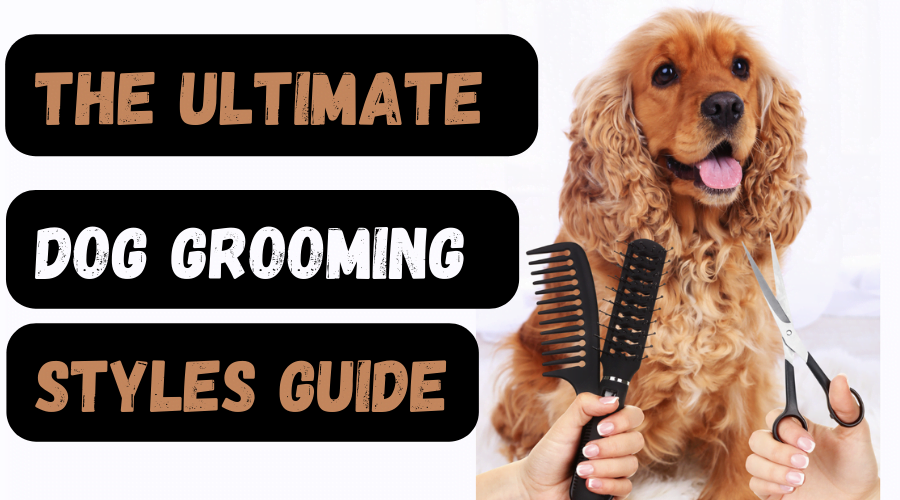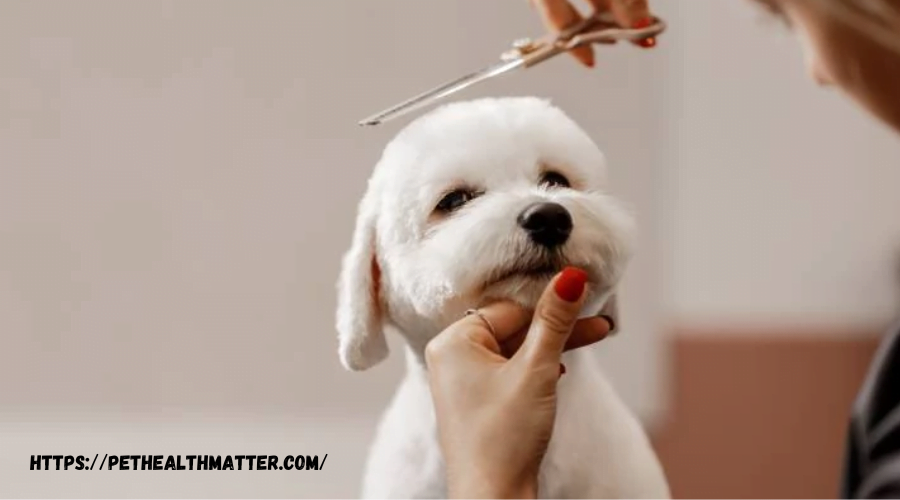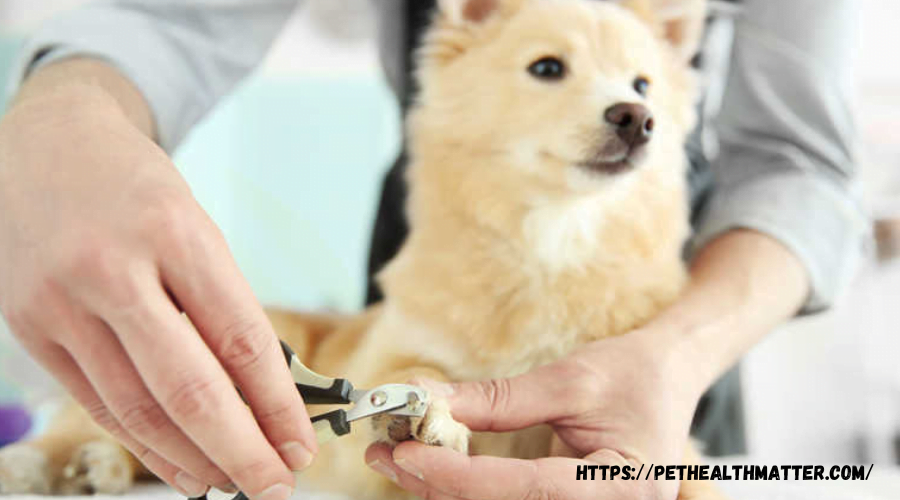
Welcome to the ultimate guide to dog grooming styles! As a dog lover, you understand the importance of grooming in keeping your furry friend healthy, happy, and looking their best. This comprehensive guide will take you on a journey through various dog grooming styles, providing you with the knowledge and inspiration to groom your beloved canine companion with style and flair.
Grooming is not just about maintaining a clean and presentable appearance for your dog. It is also an essential aspect of their overall health and well-being. Regular grooming helps prevent matting, keeps their coat and skin in top condition, and allows for early detection of any potential health issues. Additionally, grooming sessions provide an opportunity for bonding between you and your dog.
In this guide, we will cover everything you need to know about dog grooming styles. From the basics of grooming tools and techniques to exploring popular grooming styles and even creative expressions, we’ve got you covered. Whether you want to give your dog a classic look or experiment with something unique and eye-catching, you’ll find all the information and guidance you need right here.
But it doesn’t stop there. We’ll also delve into topics like nail trimming, maintaining grooming styles, and overcoming common grooming challenges. By the end of this guide, you’ll be equipped with the knowledge and skills to groom your dog like a pro.
So, get ready to embark on a grooming adventure that will not only enhance your dog’s natural beauty but also show off their individuality. Let’s dive into the world of dog grooming styles and unleash the style and flair that your loyal companion deserves.
The Basics of Dog Grooming
Before we dive into the exciting world of dog grooming styles, let’s start with the basics. Grooming your dog involves more than just giving them a bath. It requires the right tools, techniques, and knowledge to ensure a successful grooming session. Here, we will cover the essential aspects of dog grooming that every owner should know.
Understanding the Grooming Process
Grooming your dog involves several steps, each serving a specific purpose. These steps typically include:
- Brushing: Regular brushing helps remove loose fur, prevents matting, and stimulates healthy hair growth. It also allows you to inspect your dog’s skin for any abnormalities or parasites.
- Bathing: Giving your dog a bath helps keep their coat clean and free from dirt, debris, and odors. Use a dog-specific shampoo that matches their coat type and follow proper bathing techniques to ensure their comfort.
- Drying: After bathing, it’s important to dry your dog thoroughly. Use towels or a blow dryer on a low heat setting to avoid skin irritation. Make sure their coat is completely dry to prevent fungal or bacterial infections.
- Trimming: Trimming your dog’s hair is necessary to maintain a neat appearance and prevent matting. Be cautious when using scissors or clippers and consider seeking professional help if you’re unsure.
- Nail Trimming: Keeping your dog’s nails trimmed is essential for their comfort and overall health. Long nails can cause discomfort and affect their gait. Use specialized nail clippers designed for dogs, and be careful not to cut too close to the quick (the sensitive part of the nail).
- Ear Cleaning: Regularly cleaning your dog’s ears helps prevent ear infections and removes excess wax and dirt. Use a gentle, dog-specific ear cleaner and cotton balls or pads to clean the outer ear.
- Dental Care: Maintaining good dental hygiene is crucial for your dog’s overall health. Brush their teeth regularly with a dog-friendly toothbrush and toothpaste, and consider providing dental chews or treats to promote oral health.
Essential Grooming Tools
| Essential Grooming Tools | Use of That Tool |
| Brushes | For Grooming of Dog |
| Combs | For maintain a good hairstyle |
| Shampoos and Conditioners | Necessary for healthy hairs |
| Nail Clippers | To cut Nails correctly |
To effectively groom your dog, you’ll need the right tools. Here are some essential grooming tools every owner should have:
Brushes: Different coat types require different brushes. Common types include slicker brushes, bristle brushes, and undercoat rakes. Choose a brush that suits your dog’s specific coat type to effectively remove loose hair and prevent matting.
Combs: Combs are useful for detangling and removing debris from your dog’s coat. Choose a comb with wide and narrow teeth to accommodate different areas of the body. Additionally, flea combs can help detect and remove fleas.
Shampoos and Conditioners: Dog-specific shampoos and conditioners are formulated to suit your dog’s skin and coat needs. Opt for products that are free from harsh chemicals and designed for your dog’s specific coat type (e.g., hypoallergenic shampoo for sensitive skin).
Nail Clippers: Nail clippers come in different styles, including guillotine-style clippers and scissor-style clippers. Choose a clipper that you feel comfortable using and ensure it is suitable for your dog’s nail size.
Ear Cleaner: A gentle, dog-specific ear cleaner is essential for maintaining clean and healthy ears. Avoid using cotton swabs, as they can push debris further into the ear canal.
Toothbrush and Toothpaste: Invest in a dog-specific toothbrush and toothpaste to maintain your dog’s dental health. Never use human toothpaste, as it can be toxic to dogs.
Remember, investing in quality grooming tools will make the grooming process smoother and more enjoyable for both you and your dog. Regular maintenance and cleaning of these tools are necessary to ensure their effectiveness and longevity.
In the next section, we will explore popular dog grooming styles guide , giving you inspiration to transform your pup’s appearance with style and flair.

Popular Dog Grooming Styles
Now that you’re familiar with the basics of dog grooming, it’s time to explore the exciting world of popular dog grooming styles. From classic cuts to trendy hairstyles, there are numerous options to choose from to give your furry friend a fresh and stylish look. Let’s dive into some of the most popular dog grooming styles.
Classic Cuts
- Puppy Cut: The puppy cut is a versatile style that works well for dogs of all breeds and sizes. It involves trimming the hair to a uniform length all over the body, giving your dog a youthful and adorable appearance.

- Teddy Bear Cut: The teddy bear cut is a popular choice for small and medium-sized dogs. It involves shaping the hair to resemble a fluffy teddy bear, leaving longer hair on the body and face while keeping it neatly trimmed.
- Lion Cut: The lion cut is perfect for dogs with long, flowing coats. It involves shaving the body and leaving a full mane around the neck and head, resembling the majestic appearance of a lion.
- Top Knot: The top knot is a stylish option for dogs with long hair. It involves gathering the hair on the top of the head and securing it with a band or bow, creating an elegant and sophisticated look.
- Mohawk Cut: For dog owners looking to make a bold statement, the mohawk cut is a fantastic choice. This edgy style involves shaving a strip of hair down the center of the dog’s back and leaving the hair on either side shorter or completely shaved.
Trendy Hairstyles
- Braids and Twists: Braiding or twisting the hair is a popular trend in dog grooming. It involves creating intricate patterns or twists using sections of the dog’s hair, giving them a unique and fashionable look.
- Colorful Accents: Adding vibrant colors to your dog’s coat can create a fun and eye-catching style. Dog-safe dyes and temporary color sprays can be used to achieve this look, allowing you to experiment with different shades and designs.
- Accessories: A simple accessory can instantly elevate your dog’s style. From bows and ribbons to bandanas and hats, there are plenty of options to choose from to add a touch of flair to your dog’s overall appearance.
Suitable Breeds for Each Grooming Style
While most grooming styles can be adapted to suit different breeds, some styles are particularly well-suited for specific dog breeds. Here are a few examples:
- Puppy Cut: Suitable for breeds such as Poodles, Maltese, Shih Tzus, Yorkshire Terriers, and Bichon Frises.
- Teddy Bear Cut: Works well for breeds like Shih Tzus, Bichon Frises, Havanese, and Lhasa Apsos.
- Lion Cut: Often seen on long-haired breeds like Pomeranians, Chow Chows, and Afghan Hounds.
- Top Knot: Ideal for breeds with long hair, such as Shih Tzus, Maltese, Yorkshire Terriers, and Lhasa Apsos.
- Mohawk Cut: Popular with breeds like Poodles, Shih Tzus, and Yorkshire Terriers.
Remember, these are just a few examples, and grooming styles can be customized to suit your dog’s individual needs and preferences.
The Importance of Nail Trimming for Dogs
Nail trimming is an essential aspect of dog grooming that should not be overlooked. Overgrown nails can cause discomfort, pain, and even lead to various health issues for your furry friend.

Regular nail maintenance is crucial to keep your dog’s paws healthy and prevent potential problems. Let’s explore the importance of nail trimming and provide guidance on how to trim your dog’s nails safely and effectively.
Why Nail Trimming Matters
Comfort and Mobility: Long nails can affect your dog’s ability to walk and run comfortably. If the nails become too long, they can press against the ground, causing pain and altering their gait. Keeping their nails at an appropriate length ensures optimal comfort and mobility.
Prevention of Injuries: Overgrown nails are more prone to breakage and splitting, which can be painful for your dog. Broken nails can also be susceptible to infections. Regular nail trimming reduces the risk of such injuries and promotes overall paw health.
Preventing Joint and Posture Issues: When nails are excessively long, they can impact the alignment of your dog’s toes and joints. This can lead to postural issues and potentially contribute to joint problems over time. By maintaining proper nail length, you can help prevent these issues from arising.
Scratching and Damage: If your dog’s nails are too long, they can accidentally scratch themselves or damage surfaces in your home. Regular trimming helps minimize the risk of such incidents, keeping your dog and your belongings safe.
How to Trim Your Dog’s Nails Safely
Nail trimming can be a daunting task, especially if your dog is not accustomed to it. However, with patience, practice, and the right technique, you can ensure a safe and successful nail trimming experience. Here are some steps to follow:
- Choose the Right Tools: Use high-quality nail clippers or grinders specifically designed for dogs. There are different types of nail clippers available, including guillotine-style clippers and scissor-style clippers. Find the one that you feel most comfortable using.
- Get Familiar with the Anatomy: Take a moment to familiarize yourself with your dog’s nail anatomy. The quick, which contains blood vessels and nerves, is the pink part within the nail. Be cautious not to cut into the quick, as it can cause bleeding and discomfort.
- Gradual Introduction: Start by getting your dog comfortable with the sight and sound of the nail clippers. Allow them to sniff and inspect the clippers while offering treats and praise. This helps create positive associations.
- Trim in Well-Lit Area: Choose a well-lit area where you can clearly see your dog’s nails. Adequate lighting ensures precision and reduces the risk of accidental injury.
- Trim in Small Increments: Begin trimming gradually. Take small sections off the nails at a time, avoiding the quick. If your dog has dark nails and it’s difficult to see the quick, trim just a small amount and observe for any signs of sensitivity.
- Reward and Praise: Throughout the process, offer rewards and praise to reinforce positive behavior. This helps create a positive experience and makes future nail trims easier.
- Seek Professional Help if Needed: If you’re uncomfortable or unsure about trimming your dog’s nails, consider seeking assistance from a professional groomer or veterinarian. They can provide guidance and ensure a safe nail trimming experience for your dog.
If you are a pet owner this category may helps you Pet Grooming
Remember, patience and a calm demeanor are key when trimming your dog’s nails. If you’re uncertain or your dog becomes overly anxious, do not force the issue. Seek professional help to ensure the safety and well-being of your furry friend.
Maintaining Grooming Styles and Overcoming Challenges
Once you’ve achieved your desired grooming style for your dog, it’s important to maintain it regularly. Regular maintenance ensures that your dog’s coat stays healthy and that they continue to look their best. Additionally, grooming can pose some challenges, but with the right approach, you can overcome them. Let’s explore how to maintain grooming styles and provide tips for overcoming common grooming challenges.
Maintaining Grooming Styles
Brushing: Regular brushing is key to maintaining a well-groomed appearance. Brush your dog’s coat at least a few times a week to prevent matting, remove loose hair, and keep their coat looking fresh and shiny.
Trimming: Depending on the grooming style, certain areas may require regular trimming to keep their shape. Pay attention to the hair around the face, paws, and tail, and trim as needed to maintain the desired style.
Bathing: Regular baths are essential to keep your dog’s coat clean and free from dirt and odors. Follow proper bathing techniques, use dog-specific shampoos and conditioners, and ensure thorough drying afterward.
Nail Trimming: Keep up with regular nail trims to maintain the appropriate nail length. Trim the nails whenever they start to get long to ensure your dog’s comfort and prevent any issues associated with overgrown nails.
Ear Cleaning: Regularly clean your dog’s ears to prevent wax buildup and potential infections. Use a gentle, dog-specific ear cleaner and cotton balls or pads to clean the outer ear.
Dental Care: Maintain good dental hygiene by regularly brushing your dog’s teeth and providing dental chews or treats. This helps prevent dental issues and keeps their breath fresh.
Overcoming Grooming Challenges
Sensitive Areas: Some dogs may have sensitive areas that make grooming challenging. Take extra care when grooming these areas, and if needed, seek professional help to ensure your dog’s comfort and safety.
Fear and Anxiety: Dogs may become fearful or anxious during grooming sessions. Gradual desensitization and positive reinforcement techniques can help alleviate their fears. Use treats, praise, and take breaks as needed to make the experience more pleasant for them.
Matting: Regular brushing is crucial to prevent matting, but if your dog’s coat still gets matted, take your time to gently remove them. Use a detangling spray or conditioner and a comb or slicker brush designed for removing mats. For severe matting, consult a professional groomer to avoid causing any pain or discomfort to your dog.
Eye and Ear Care: Be cautious when grooming around your dog’s eyes and ears. Use gentle techniques and be mindful not to get water or products in their eyes or ears. If you’re unsure, consult a professional groomer or veterinarian for guidance.
Professional Help: If you find grooming overwhelming or challenging, consider seeking assistance from a professional groomer. They have the expertise and experience to handle various grooming styles and can ensure a safe and stress-free grooming experience for your dog.
Remember, patience, consistency, and positive reinforcement are key when maintaining grooming styles and overcoming challenges. With time and practice, grooming will become an enjoyable and bonding experience for both you and your furry friend.
Tips for Choosing the Right Dog Groomer
Finding the right dog groomer is essential for ensuring that your furry friend receives quality grooming care. Whether you’re looking for a regular grooming routine or need specialized services, such as breed-specific cuts or creative styling, it’s important to choose a groomer who understands your dog’s needs and can provide a safe and comfortable grooming experience. Here are some tips to help you select the right dog groomer.
Ask for Recommendations: Seek recommendations from friends, family, or your veterinarian. Personal referrals can give you valuable insights into the quality of a groomer’s services and their reputation within the community.
Research Online: Browse online platforms, such as review websites or local directories, to find reputable groomers in your area. Read customer reviews and look for groomers who consistently receive positive feedback.
Visit the Facility: Schedule a visit to the grooming facility before booking an appointment. Take note of the cleanliness, organization, and overall environment. A well-maintained and hygienic facility is crucial for your dog’s safety and comfort.
Meet the Groomer: Request to meet the groomer in person to discuss your dog’s specific needs. Ask about their experience, training, and any certifications they may have. A knowledgeable and skilled groomer will be able to answer your questions and provide guidance on suitable grooming styles for your dog.
Observe Interactions: While visiting the facility, observe how the groomer interacts with the dogs in their care. Look for signs of patience, gentle handling, and a calm demeanor. A groomer who demonstrates care and compassion towards the dogs is more likely to provide a positive grooming experience.
Inquire About Services Offered: Ensure that the groomer offers the specific services you require, such as nail trimming, ear cleaning, or specialized grooming styles. Discuss any specific needs or concerns you have regarding your dog’s grooming.
Check for Proper Handling and Safety Practices: Inquire about the groomer’s handling techniques and safety measures. They should have protocols in place to ensure the well-being of the dogs during the grooming process. This includes secure restraint methods, sanitary practices, and proper equipment usage.
Consider Your Dog’s Comfort: Choose a groomer who prioritizes the comfort and well-being of the dogs in their care. Ask about the grooming process, including the use of calming techniques or breaks for anxious dogs. A groomer who understands and accommodates your dog’s individual needs will help create a positive grooming experience.
Evaluate the Price: While price shouldn’t be the sole determining factor, consider the cost of grooming services. Compare prices among different groomers in your area, keeping in mind that higher prices may reflect the quality of service provided. Ensure that the services offered align with the price quoted.
Trust Your Instincts: Ultimately, trust your instincts when choosing a groomer. If something doesn’t feel right or you’re unsure about a particular groomer, continue your search until you find one that gives you confidence and peace of mind.
Finding the right groomer may take some time and research, but it’s worth the effort to ensure your dog receives the best possible care and grooming experience. Taking proactive steps in selecting a groomer can contribute to your dog’s overall well-being and happiness.
Conclusion
In conclusion, regular grooming is a vital aspect of dog care that offers numerous benefits. It helps maintain a healthy coat, reduces hairballs, prevents matting and tangles, and allows for early detection of skin issues. Grooming also promotes good hygiene, strengthens the bond between you and your dog, and enables you to monitor their overall health.
By creating a calm and positive grooming environment, you can reduce stress and make grooming a pleasant experience. Remember to consider your dog’s breed, coat type, and individual needs when establishing a grooming routine. Consult with professionals for guidance and enjoy the rewarding experience of grooming your feline companion. I hope this dog grooming styles guide on all about dogs grooming helps you.
What is a puppy cut in dog grooming?
A puppy cut is a common, low-maintenance style where the hair is cut uniformly all over the body, typically 1-2 inches long. It’s suitable for all breeds and seasons, and it makes your dog look like a puppy, hence the name.
What is a teddy bear cut?
The teddy bear cut, also known as the pet clip, involves trimming the hair to about 2-3 inches long all over the body, giving the dog a fluffy, teddy bear-like appearance. This style is popular among small, fluffy breeds like Shih Tzus and Bichons.
What is a top knot style in dog grooming?
A top knot style involves leaving the hair on the top of the dog’s head longer and tying it up into a bun or a knot. This style is commonly seen in breeds like Shih Tzus, Poodles, and Maltese.
What is a kennel cut?
A kennel cut is a short, all-over trim that’s easy to maintain. It’s ideal for warmer weather or for dogs who spend a lot of time outdoors. The length can vary based on the owner’s preference and the dog’s comfort.
What is a lion cut in dog grooming?
A lion cut involves shaving most of the body but leaving the hair around the head, neck, and end of the tail long, making the dog resemble a lion. This style is often seen on Pomeranians and Chow Chows.
